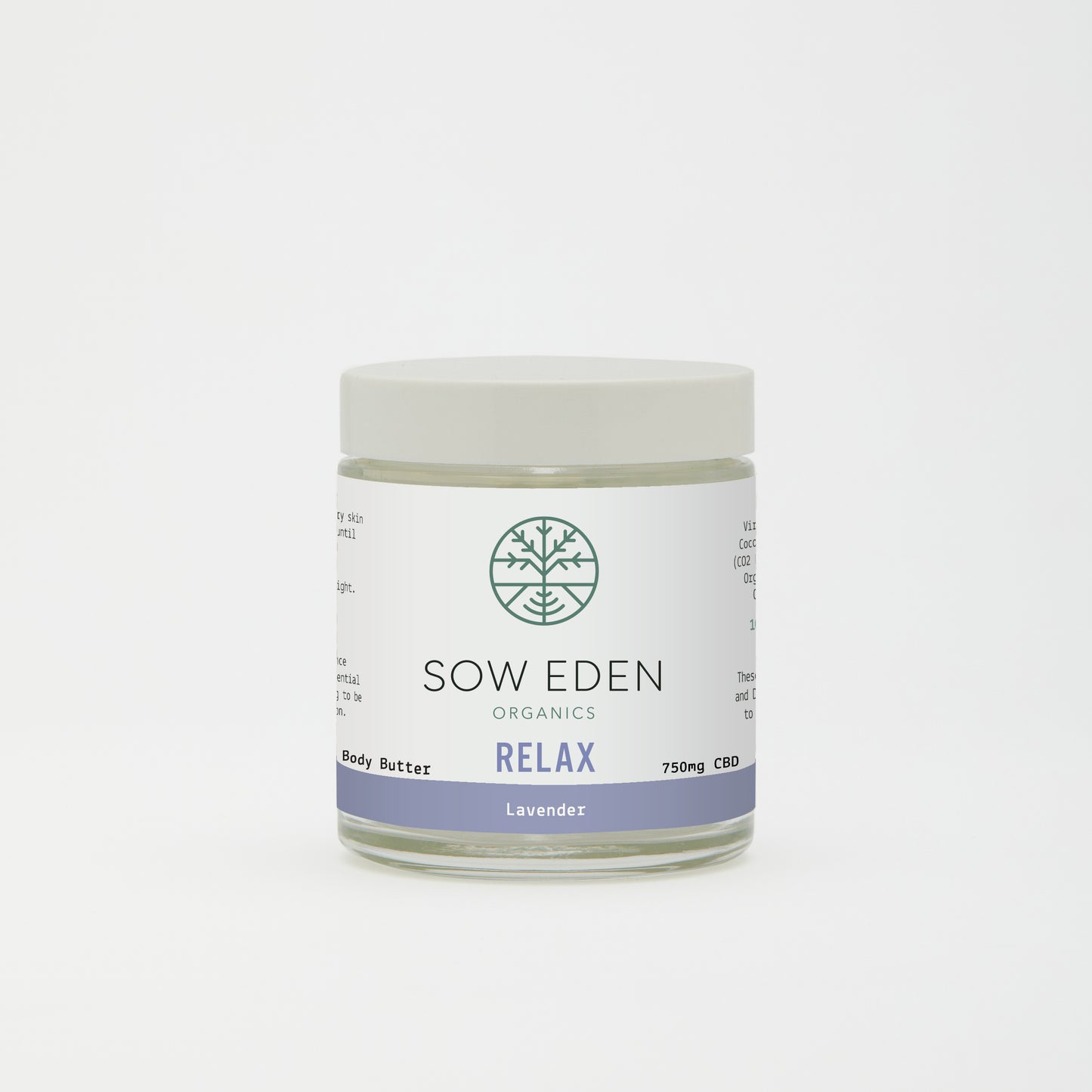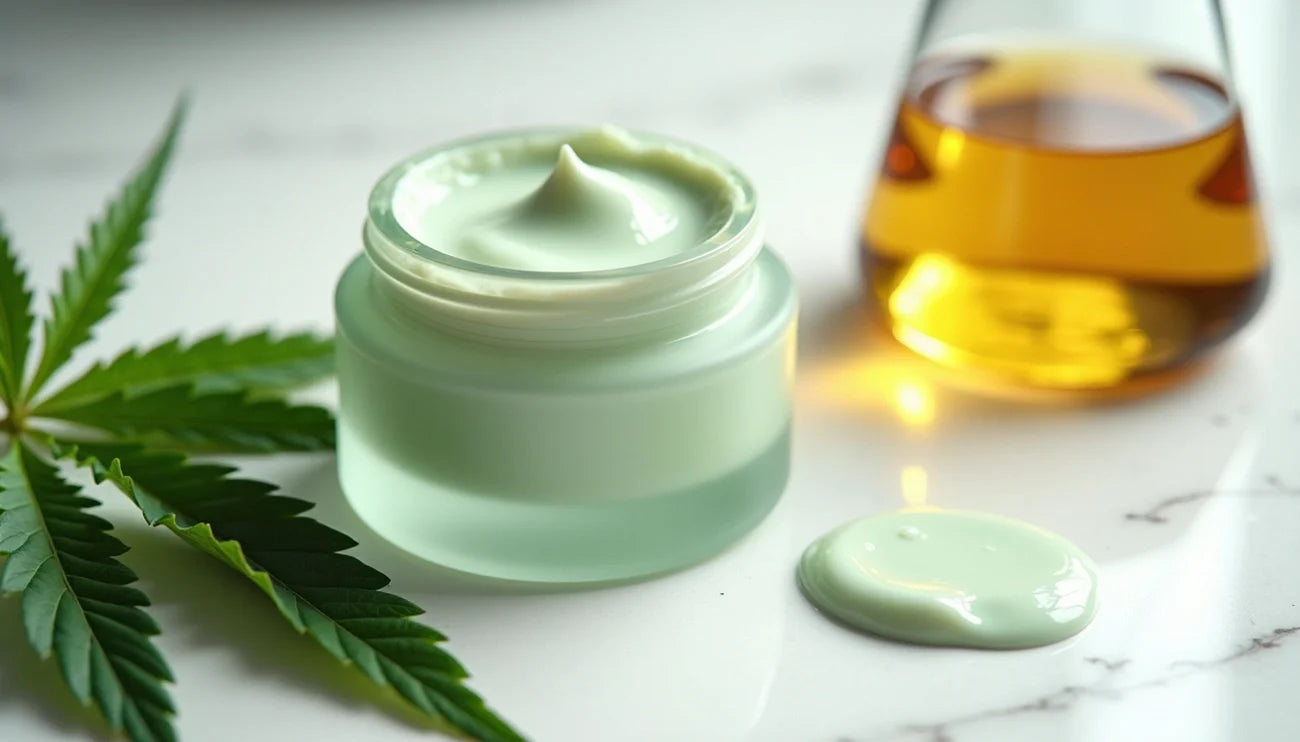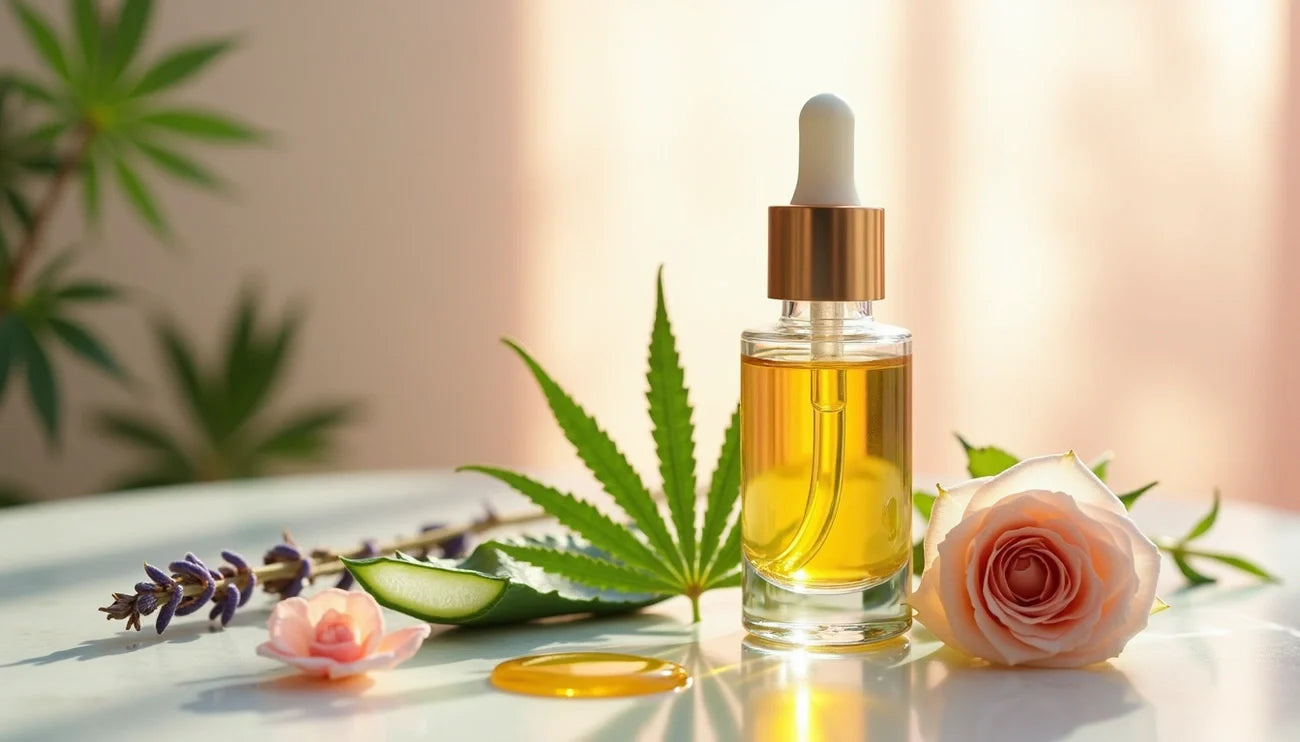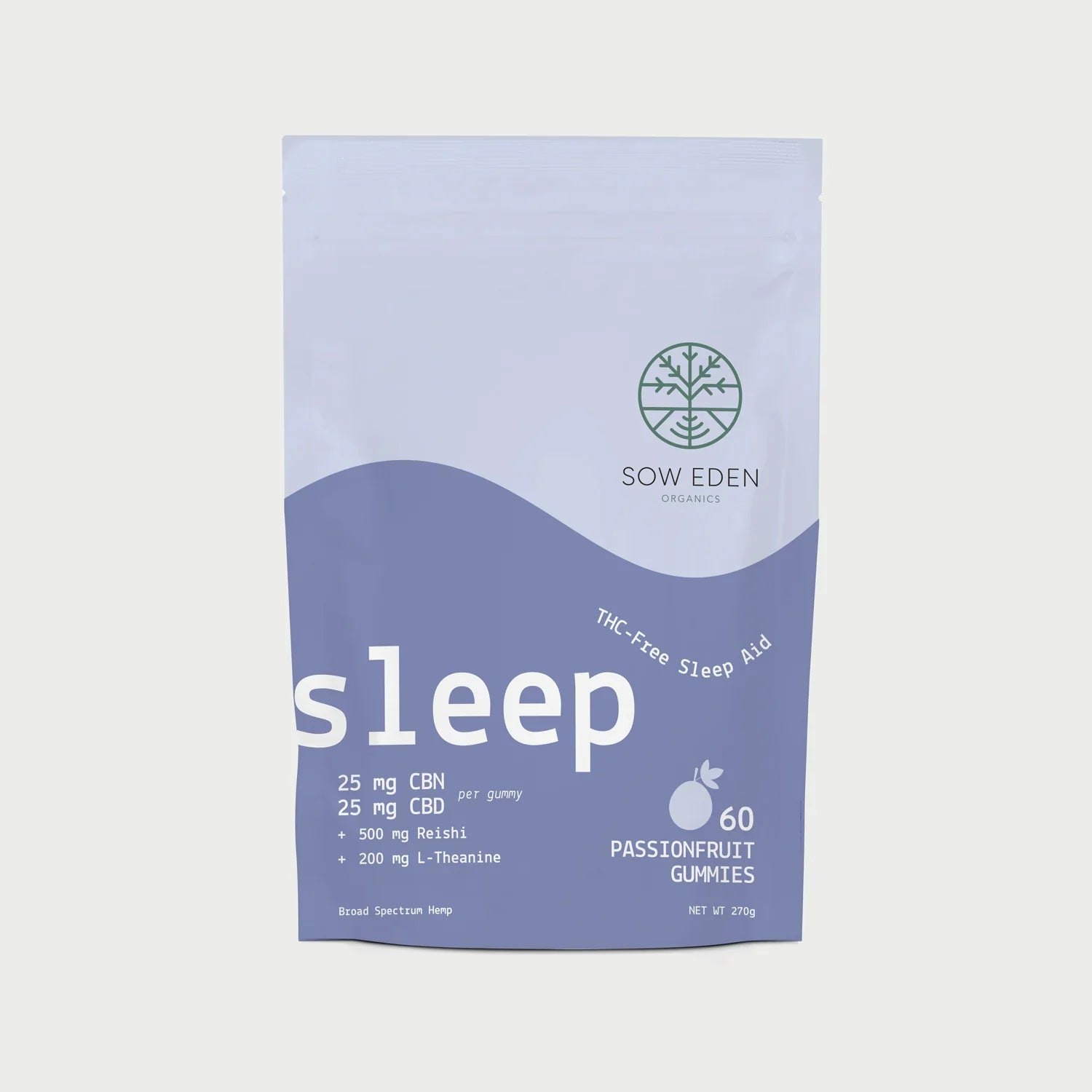Understanding the Safety Profile of CBD Topicals
Side effects of cbd cream are generally mild and uncommon, but understanding them is crucial for safe use. Most users experience no adverse reactions, but potential side effects include:
• Skin irritation - redness, itching, or rash at application site • Contact dermatitis - allergic reaction to ingredients • Dry mouth - rare with topical use, more common with high doses • Drowsiness - uncommon unless using large amounts • Drug interactions - possible with blood thinners and certain medications
The research shows that topical CBD products are generally well-tolerated, with most users experiencing no significant side effects when used as directed. A 2020 systematic review found that adverse effects from topical CBD are uncommon and typically mild, with no reports of severe reactions in the reviewed studies.
Why do side effects occur? CBD cream interacts with your skin's endocannabinoid system through CB1 and CB2 receptors. While this interaction is generally beneficial, individual sensitivities to CBD or other ingredients in the formulation can cause reactions. The good news is that most side effects are preventable through proper patch testing and product selection.
Unlike oral CBD, topical applications rarely reach your bloodstream in significant amounts. This means fewer systemic side effects but also highlights why ingredient quality matters so much for skin reactions.
I'm Jacob Dunn, CEO of Sow Eden Organics, and I've spent years researching holistic CBD solutions and understanding how side effects of cbd cream can be minimized through proper formulation and quality sourcing. My experience in sustainable agriculture and wellness has shown me that most adverse reactions stem from poor product quality rather than CBD itself.
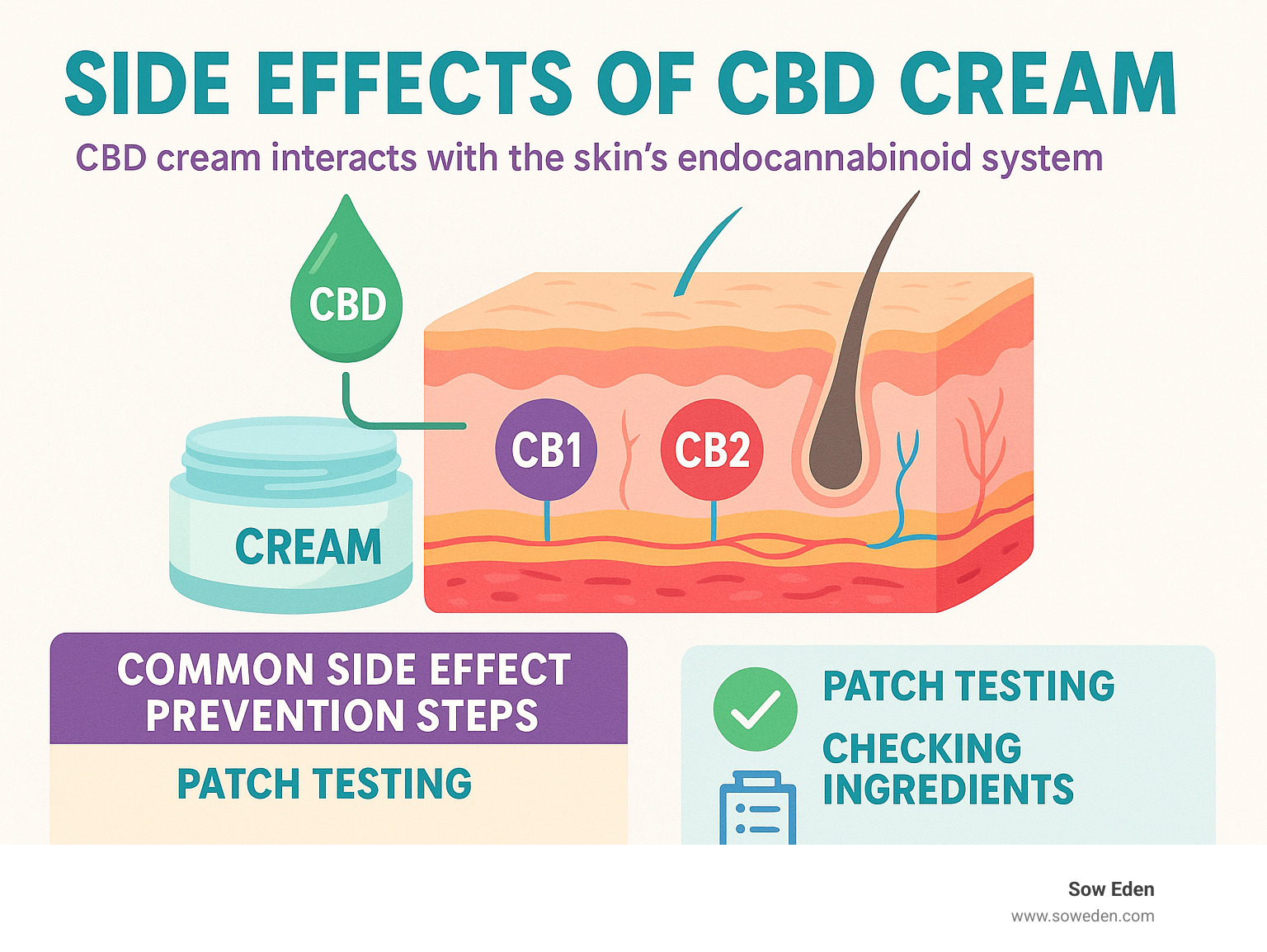
What Is CBD Cream & How Does It Work?
Think of CBD cream as your skin's personal wellness assistant. Unlike popping a pill or taking drops under your tongue, topical CBD works right where you apply it, delivering cannabidiol directly to your skin's surface and deeper layers.
Your skin is actually pretty amazing when it comes to CBD. It has its own network of CB1 and CB2 receptors that are part of your body's endocannabinoid system. When you massage CBD cream into your skin, these receptors help manage things like inflammation, discomfort, and how your skin cells function. It's like having a direct conversation between the CBD and your skin, without bothering the rest of your body too much.
The magic happens through transdermal absorption - fancy words for how substances move through your skin layers. The quality of your CBD cream makes a huge difference here. Good carrier oils like coconut oil or hemp seed oil act like helpful guides, escorting the CBD through your skin more effectively.
At Sow Eden, we've found that combining our CBD-A and CBG-A with natural botanicals like ginger root and lemon peel doesn't just smell great - these ingredients can actually help improve how well your skin absorbs the CBD while adding their own wellness benefits.
Now, here's where things get interesting for side effects of cbd cream. You'll typically find two main types: full-spectrum formulations that include multiple cannabinoids and terpenes, and isolate versions with pure CBD only. Full-spectrum might offer what researchers call an "entourage effect" where compounds work better together, but some sensitive folks find isolate gentler on their skin.
More info about CBD Topicals & Your Skin
Scientific research on topical cannabinoids
Creams vs Other CBD Formats
Here's where CBD cream really shines compared to other formats - it's all about location, location, location. While oral CBD takes a journey through your digestive system and affects your whole body, topical CBD stays local and gets to work right where you need it.
The onset and duration tell an interesting story. CBD cream typically starts working within 15-45 minutes and keeps going for about 2-4 hours. Oral CBD takes longer to kick in (30-90 minutes) but sticks around longer (4-8 hours). It's like choosing between a quick coffee meeting versus a long dinner - both have their place.
What's really fascinating is the systemic exposure difference. Research shows that topical CBD rarely makes it into your bloodstream in significant amounts. This is actually great news for side effects of cbd cream because it means you're much less likely to experience whole-body effects like drowsiness or dry mouth that sometimes happen with oral CBD.
The bioavailability story is pretty cool too. While oral CBD might seem more "powerful" because it circulates throughout your system, much of it gets processed by your liver before reaching where you actually want it. Topical applications deliver CBD directly to the target area, which can be more efficient for localized needs.
| Comparison Factor | Topical CBD Cream | Oral CBD |
|---|---|---|
| Common Side Effects | Skin irritation, rash | Dry mouth, drowsiness, diarrhea |
| Onset Time | 15-45 minutes | 30-90 minutes |
| Duration | 2-4 hours | 4-8 hours |
| Drug Test Risk | Very low | Moderate (if contains THC) |
| Liver Metabolism | Minimal | Significant |
| Systemic Effects | Rare | Common |
The Most Common Side Effects of CBD Cream
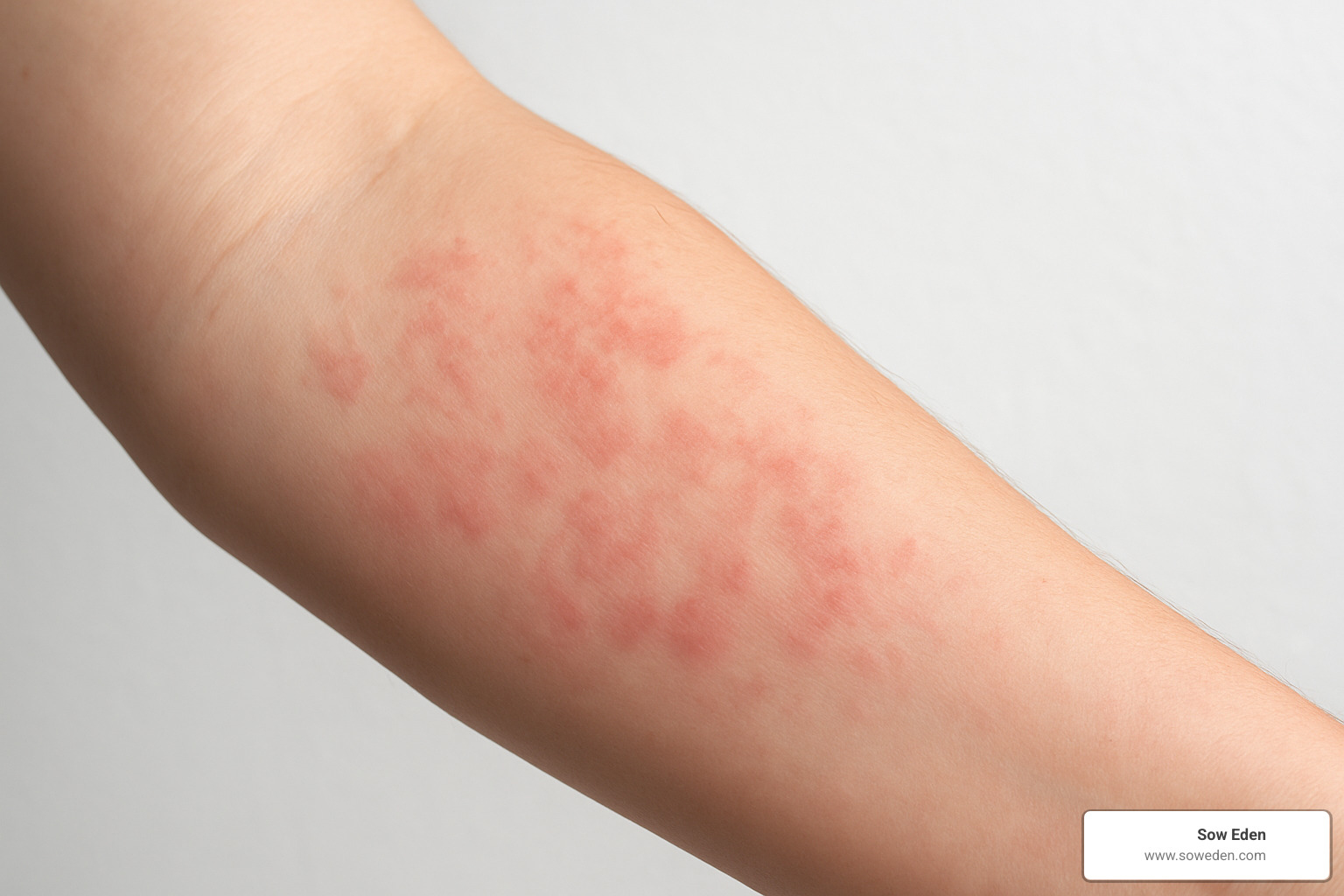
Let's talk honestly about what you might experience when using CBD creams. While most people use these products without any issues, understanding the potential side effects of cbd cream helps you make informed decisions about your wellness routine.
Skin irritation is the most common reaction you might encounter. This usually shows up as redness, itching, or a mild rash where you applied the cream. Don't panic if this happens - it's often your skin's way of saying it doesn't love one of the ingredients. A medical case study documented four women who developed small red bumps after using CBD products, with reactions appearing anywhere from 6 hours to 9 days after first use.
The good news? True allergic reactions to CBD itself are actually pretty rare. What's more likely is that your skin is reacting to something else in the formulation. Fragrances, preservatives, or botanical extracts can be the real troublemakers for sensitive skin types.
You might be surprised to learn that some people experience dry mouth from topical CBD cream. While this is much more common with products you swallow, it can happen when you use larger amounts on your skin. Your body's systems are all connected, so even topical applications can sometimes affect other areas.
Drowsiness is another rare side effect worth mentioning. Since topical CBD doesn't typically enter your bloodstream in significant amounts, feeling sleepy is uncommon. However, if you're particularly sensitive or use a lot of product, you might notice some mild relaxation effects.
Scientific research on CBD tolerance
Side Effects of CBD Cream Overview
Here's where being smart about your approach really pays off. Patch testing isn't just a suggestion - it's your best defense against unwanted reactions. Simply apply a small dab of cream to your inner forearm and wait 24 to 48 hours. This simple step can save you from dealing with irritation across a larger area of your skin.
Many reactions that get blamed on CBD are actually caused by other ingredients hiding in the formula. Synthetic fragrances are notorious troublemakers, along with preservatives like parabens and certain essential oils. Even seemingly innocent carrier oils like coconut oil can cause problems for some people.
With topical CBD, more definitely isn't always better. Using too much cream can actually increase your chances of skin irritation and might even cause those mild systemic effects we mentioned earlier. The dose-response relationship is real - your skin has limits, and respecting them leads to better results.
At Sow Eden, we've learned that quality ingredients make all the difference in preventing side effects of cbd cream. Our approach focuses on combining CBD-A and CBG-A with gentle, natural botanicals that work with your skin rather than against it.
Rare or Serious Reactions & Who Should Avoid CBD Cream
While most people tolerate CBD creams beautifully, it's important to know when to pump the brakes. Side effects of cbd cream are typically mild, but certain folks need to be extra careful or skip topical CBD altogether.
When Things Get Serious: Severe allergic reactions are uncommon but can happen. We're talking about allergic dermatitis that spreads beyond the application area, or contact eczema that causes intense itching and blistering. If you notice widespread rash, severe swelling, or any breathing difficulties, stop using the product immediately and get medical help.
Some people develop what dermatologists call "delayed hypersensitivity reactions" - these can show up days after you first try a product, which is why patch testing is so crucial.
The Hepatotoxicity Question: Here's something worth knowing: high doses of oral CBD have occasionally caused liftd liver enzymes in clinical studies. While this hepatotoxicity risk is mainly linked to prescription-strength oral CBD products, it's theoretically possible if you're absorbing large amounts through your skin over time.
Special Groups Who Should Skip CBD Cream:
Expecting and nursing mothers should avoid CBD creams entirely. Current research simply doesn't give us enough information about safety during pregnancy and breastfeeding, and it's better to err on the side of caution when there's a little one involved.
Children and teenagers shouldn't use CBD creams without medical supervision. Their skin is more permeable than adult skin, which means they might absorb more CBD than intended. This falls under our pediatrics safety guidelines.
If you're dealing with severe autoimmune skin conditions like widespread eczema or psoriasis, talk to your dermatologist first. Compromised skin barriers can increase absorption, potentially leading to unexpected effects.
People with glaucoma should be cautious, as some research suggests CBD might temporarily affect eye pressure. Similarly, those with epilepsy who take anti-seizure medications need medical guidance due to potential interactions.
Interactions, Medications & Conditions
Here's where things get a bit technical, but stick with me - it's important stuff. CBD can affect something called CYP450 enzymes in your liver. These enzymes break down many medications, and even though topical CBD doesn't usually reach your bloodstream in large amounts, it's worth being careful.
Blood thinners like warfarin are particularly sensitive to these interactions. If you're on these medications, check with your healthcare provider before trying CBD cream.
Sedatives and sleep medications might have improved effects if combined with CBD, even topical forms. The same goes for certain anticonvulsants used for epilepsy - they can be affected by CBD's enzyme interactions.
Hypertensive medications (blood pressure drugs) deserve special mention too. CBD might have mild blood pressure effects, so combining it with your prescribed medications could potentially cause issues.
The bottom line? If you're taking any prescription medications regularly, especially those with "narrow therapeutic windows" (where the difference between helpful and harmful doses is small), have a chat with your pharmacist or doctor before adding CBD cream to your routine.
How to Minimize the Risk of Side Effects

The best way to enjoy CBD cream benefits is by preventing problems before they start. Think of it like trying a new recipe - you wouldn't dive in without checking the ingredients first, especially if you have food sensitivities.
Patch testing is your first line of defense against side effects of cbd cream. Choose a small spot on your inner forearm and apply about a dime-sized amount of the cream. Then comes the hard part - waiting 24 to 48 hours without washing that area. I know it's tempting to check every few hours, but give your skin time to show its true reaction. Look for any redness, itching, swelling, or rash during this period. If your skin stays happy, you're likely good to go with broader application.
Starting with less is always smarter than dealing with more later. A thin layer covering your target area usually does the job perfectly. You can always add more cream, but you can't take back an application that causes irritation. This start-low-go-slow approach has saved countless people from unnecessary discomfort.
Quality matters tremendously when it comes to avoiding reactions. Look for products with a Certificate of Analysis (COA) that confirms CBD content and ensures THC levels stay at or below 0.3%. Third-party lab testing gives you confidence in what you're putting on your skin, while organic sourcing reduces your exposure to pesticides and harmful chemicals. Clear ingredient lists help you spot potential troublemakers before they cause problems.
Your skin's overall health plays a big role in how it responds to new products. Well-hydrated skin tends to be more resilient and less reactive. Drink plenty of water throughout the day and maintain your regular skincare routine. If you notice dry mouth from CBD cream use (though it's rare with topical application), increase your water intake and consider sugar-free gum to stimulate saliva production.
Know when to call it quits. Discontinue use immediately if you experience persistent redness or rash, swelling beyond where you applied the cream, severe itching or burning, or any unexpected symptoms like dizziness or nausea. Your body is usually pretty good at telling you when something isn't working.
At Sow Eden, we combine our CBD-A and CBG-A with natural botanicals like ginger root and lemon peel, which can actually help support your skin's natural balance. But even with the gentlest formulations, individual reactions can happen, which is why we always recommend that patch test.
More info about CBD Products efficacy
Side Effects of CBD Cream vs Oral CBD
Understanding how topical and oral CBD differ in their side effect profiles helps you make the right choice for your wellness routine. The delivery method really does change everything.
Topical CBD works locally at the application site, while oral CBD travels throughout your entire system via your bloodstream. This fundamental difference explains why you're much less likely to experience systemic effects like drowsiness or digestive issues with creams. Your skin acts as a natural barrier, keeping most of the CBD right where you applied it.
Liver metabolism creates another major distinction. When you take oral CBD, it goes through extensive processing in your liver, where it can interact with enzymes that also process other medications. Topical CBD largely bypasses this process, which means fewer worries about drug interactions and less strain on your liver's processing systems.
Drug test concerns are significantly lower with topical applications. While some full-spectrum creams contain trace amounts of THC, the minimal absorption through your skin makes it highly unlikely to show up on standard drug tests. This gives you more peace of mind compared to oral products, where THC accumulation is more predictable.
The side effects of cbd cream tend to be localized and mild - think skin irritation or redness at the application site. Oral CBD, on the other hand, can cause dry mouth, changes in appetite, or drowsiness because it affects your whole system. Neither is necessarily better or worse; they're just different tools for different situations.
Frequently Asked Questions about Side Effects of CBD Cream
Can CBD cream show up on a drug test?
This is one of the most common concerns we hear from customers, and it's a valid worry. The good news is that side effects of cbd cream extending to drug test issues are extremely rare, but let's break down what you need to know.
Most drug tests are looking for THC metabolites, not CBD itself. Since topical CBD cream is applied to your skin rather than ingested, very little actually enters your bloodstream. Think of it like using a moisturizer - most of it stays right where you put it.
However, full-spectrum CBD creams do contain trace amounts of THC (legally required to be 0.3% or less). With normal use, this tiny amount combined with minimal absorption means you're very unlikely to test positive. But if you're subject to regular drug testing, it's worth being extra cautious.
Your safest bet is choosing CBD isolate products instead of full-spectrum ones. Always check the Certificate of Analysis (COA) to verify exactly how much THC is in your cream. And if you're worried, have an honest conversation with your employer about their CBD policies - many companies are updating their guidelines as CBD becomes more mainstream.
Is CBD cream safe during pregnancy or breastfeeding?
I know this isn't the answer expecting mothers want to hear, but current medical guidance recommends avoiding CBD products during pregnancy and breastfeeding. This recommendation isn't necessarily because CBD cream is dangerous, but because we simply don't have enough research yet.
The FDA has specifically cautioned against CBD use during these special times for several important reasons. Potential contamination with pesticides or heavy metals is a concern with any topical product, and developing babies are especially sensitive to these substances. There's also the possibility that CBD could affect fetal brain development, though we don't have definitive studies either way.
During breastfeeding, there's a chance that CBD could transfer through breast milk to your baby. Since infants' systems are still developing, even small amounts of substances that are safe for adults might not be appropriate for them.
If you're dealing with skin conditions during pregnancy or while breastfeeding and considering CBD cream, your best move is talking with your healthcare provider. They can suggest safer alternatives that won't put you or your baby at risk.
How long do side effects of CBD cream usually last?
Here's some reassuring news - when side effects of cbd cream do occur, they're typically short-lived and resolve on their own once you stop using the product.
Skin irritation is the most common issue, and it usually starts improving within 24-48 hours after you discontinue use. If you notice redness, itching, or a mild rash, simply wash the area gently and avoid applying more cream. Most people see their skin return to normal within a day or two.
Mild drowsiness is much less common with topical CBD than with oral products, but if you do experience it, it typically fades within 2-4 hours. This is because very little CBD from creams actually reaches your bloodstream, so any systemic effects are usually brief.
Dry mouth occasionally happens with topical use, especially if you're using larger amounts of cream. The good news is this usually resolves within a few hours once you increase your water intake. Keep a water bottle handy and consider sugar-free gum if the sensation bothers you.
The key thing to remember is that if side effects persist beyond 48 hours or seem to be getting worse rather than better, it's time to stop using the product and consult a healthcare professional. And if you experience any severe reactions like widespread rash, significant swelling, or difficulty breathing, seek medical attention immediately - though these serious reactions are extremely rare with topical CBD products.
Conclusion & Safe Next Steps

Understanding side effects of cbd cream is like having a roadmap for your wellness journey - it shows you where the bumps might be so you can steer around them smoothly. The good news? Most people never encounter serious issues, and when side effects do occur, they're typically mild and manageable.
Throughout this guide, we've seen that quality makes all the difference. At Sow Eden, our holistic approach means we carefully combine premium organic CBD-A and CBG-A with thoughtfully selected botanicals like ginger root and lemon peel. This isn't just about creating effective products - it's about minimizing your risk of experiencing unwanted reactions.
Starting your CBD cream journey safely begins with a conversation with your healthcare professional, especially if you have existing medical conditions or take medications. Think of them as your wellness teammate who can help you make informed decisions based on your unique health profile.
Patch testing remains your best friend when trying any new CBD cream. Even if you've used similar products before, each formulation is different. That small test on your inner forearm could save you from a larger, more uncomfortable reaction later.
Keeping a simple usage journal might seem unnecessary, but it's incredibly valuable. Note when you apply the cream, how much you use, and any effects you notice. This information helps you find your sweet spot and provides useful details if you need to consult a healthcare provider.
Your body is remarkably good at telling you what works and what doesn't. Listen to those signals carefully - mild redness that fades quickly might be normal, but persistent irritation is your skin's way of saying "let's try something else."

Quality truly matters in the CBD world. Many reactions people blame on CBD actually come from poor manufacturing, contaminated hemp, or questionable additives. When you choose products with transparent third-party testing and clear ingredient lists, you're not just buying CBD - you're investing in peace of mind.
Everyone's skin is unique. What works wonderfully for your friend might not be the right fit for you, and that's perfectly normal. The key is finding your personal balance between effectiveness and comfort.
If you experience any concerning reactions, don't hesitate to reach out to healthcare professionals. They can help determine whether your reaction is related to the CBD, other ingredients, or something else entirely that might need attention.
More info about the best CBD skincare products
Your wellness journey should feel empowering, not worrisome. By understanding potential side effects of cbd cream and taking smart precautions, you can confidently explore what quality CBD products might offer for your skin and overall well-being. Start slow, stay informed, and trust your body's wisdom - it's been taking care of you this long, after all.

